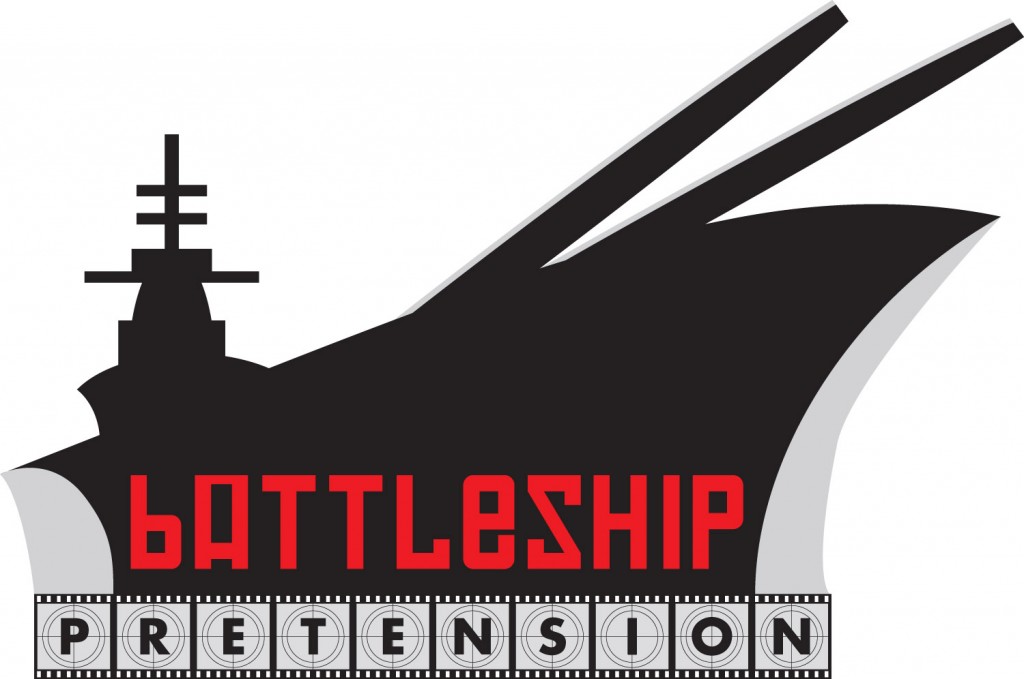 The latest episode of the film podcast Battleship Pretension [RSS, iTunes] features yours truly on the third mic, discussing the history of the “Indiewood” movement in the United States. If you’ve personally experienced any important chapter in the history of American independent film, you’ve experienced this one: it saw the combined forces of the Sundance Film Festival, Miramax Films, and an energetic pack of young (or young-ish) Gen-X (or Gen-X-ish) filmmakers release a storm of creativity into the mainstream U.S. zeitgeist, the likes of which it hadn’t seen since the “New Hollywood” of the seventies. Quentin Tarantino, Kevin Smith, Robert Rodriguez, Steven Soderbergh, Wes Anderson, Paul Thomas Anderson — like these guys’ work or not, you can’t help but get drawn in by how they made it, how it pulled them into the public consciousness, and how they rode the wave even as it broke.
The latest episode of the film podcast Battleship Pretension [RSS, iTunes] features yours truly on the third mic, discussing the history of the “Indiewood” movement in the United States. If you’ve personally experienced any important chapter in the history of American independent film, you’ve experienced this one: it saw the combined forces of the Sundance Film Festival, Miramax Films, and an energetic pack of young (or young-ish) Gen-X (or Gen-X-ish) filmmakers release a storm of creativity into the mainstream U.S. zeitgeist, the likes of which it hadn’t seen since the “New Hollywood” of the seventies. Quentin Tarantino, Kevin Smith, Robert Rodriguez, Steven Soderbergh, Wes Anderson, Paul Thomas Anderson — like these guys’ work or not, you can’t help but get drawn in by how they made it, how it pulled them into the public consciousness, and how they rode the wave even as it broke.
And if you happened to come of age as a filmmaker or cinephile in the nineties, you couldn’t help but draw inspiration from all these Indiewood directors’ nearly budgetless but always exhilarating first features. After a bit of discussion about, of course, travel in New Zealand, Tyler, David, and I work our way through a history of Indiewood through a selection of these debut films:
- Steven Soderbergh’s sex, lies, and videotape (1989)
- Hal Hartley’s The Unbelievable Truth (1989)
- Whit Stillman’s Metropolitan (1990)
- Richard Linklater’s Slacker (1991)
- Quentin Tarantino’s Reservoir Dogs (1992)
- Robert Rodriguez’s El Mariachi (1993)
- Bryan Singer’s Public Access (1993)
- David O. Russell’s Spanking the Monkey (1994)
- Kevin Smith’s Clerks (1994)
- Todd Solondz’s Welcome to the Dollhouse (1995)
- Alexander Payne’s Citizen Ruth (1996)
- Wes Anderson’s Bottle Rocket (1996)
- Paul Thomas Anderson’s Hard Eight (1996)
- Darren Aronofsky’s Pi (1998)
- Spike Jonze’s Being John Malkovich (1999)
Alas, as my research revealed to me, any guide like this is doomed to incompleteness. Where, you might ask, has Tom DiCillo gone? Vincent Gallo? Allison Anders? Alexandre Rockwell? We do touch on a couple of them, and our discussion does reach a few disputed members of the movement like David Fincher, Sofia Coppola, Michael Moore, and “honorary Americans” Christopher Nolan and Danny Boyle, but yes, the overlooked approach numberlessness.
So I encourage you, dear readers and listeners, to chart your own path through Indiewood. You can get a detailed lay of the land from the following five books, available from retailers and friendly local libraries everywhere:
- Peter Biskind’s Down and Dirty Pictures (see also his Easy Riders, Raging Bulls, which covers the New Hollywood period critics often frame Indiewood as an echo of)
- James Mottram’s The Sundance Kids
- John Pearson’s Spike, Mike, Slackers, and Dykes, or its newer edition, Spike Mike Reloaded
- Sharon Waxman’s Rebels on the Backlot
- Michael Z. Newman’s Indie (which I couldn’t actually find at the library, but which nevertheless seems to provide highly relevant historical context)
Y’know, I feel like we might’ve given Hal Hartley the short shrift. I should go back on to talk about Hal Hartley for three more hours.
* * *
My other guest appearances:
- The Criterioncast on Chantal Akerman’s Jeanne Dielman 23 quai du Commerce, 1080 Bruxelles
- The Criterioncast on Abbas Kiarostami’s Taste of Cherry
- G.I.O Get It On with Giovanni Giorgio the third time
- G.I.O Get It On with Giovanni Giorgio the second time (can’t find this one, for some reason)
- G.I.O. Get It On with Giovanni Giorgio
- K-Town Tonight on Radio Korea with Mike and Elli
- The Creative Community on Channel 21 with David Starkey
- Radio Causeway on KCSB with Tim Grigsby and Pav Aulakh
- Think Different TV with Ben Casnocha
- Full-Stop.net with Michael Schapira
- Broadcasting Brain with Mark Dykeman (this might not be on the net anymore)
- The People You Don’t Know with Eugene Ahn
Post a Comment